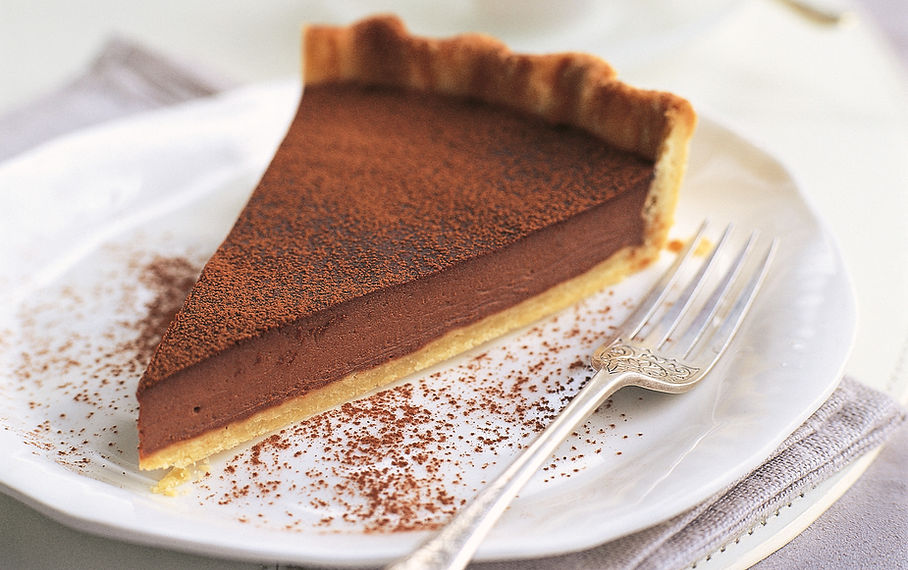



Atelier Cuisine Fourcès
cooking workshops & recipes

Atelier Cuisine Fourcès
Laura Washburn Hutton at ‘Atelier Cuisine Fourcès’ has been a Simply Gascony Working Partner since 2022. Laura offers a unique insight to food and cooking in Gascony because she knows how the ingredients are grown and produced, where they can be bought in local markets, which recipes to use according to the seasons and the ingredients, and then how to prepare and cook the food for a delicious Gascon meal.

Gascony is renowned for its authentic local cuisine. Flavours are rich, varied and healthy, food is generally unprocessed and sourced locally. Village markets are full of meat, fresh fruit and vegetables, bread, patisserie and croissants, and a vast range of charcuterie and cheeses.
Laura helps Simply Gascony guests interested in food, cooking, and local recipes, to discover more about the history and traditions of Gascon food while on holiday. Laura has suggested three separate ways to do this, see below, but if you want something different – talk to Laura at Atelier Cuisine!
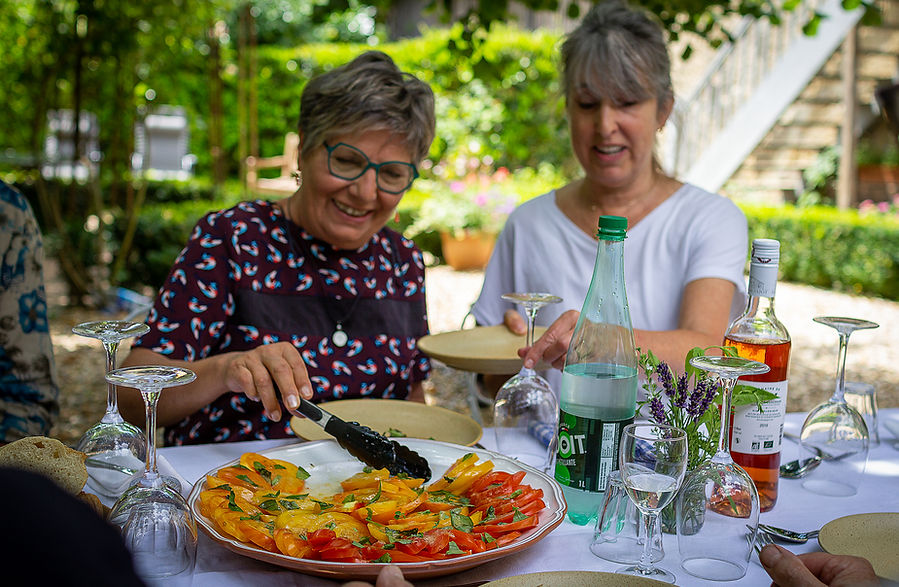
Laura says:
“If you are looking for a taste of rural France in an authentic setting, you will soon see there is no shortage of wonderful local restaurants and markets in the Gers. But, if you are looking for an authentic gastronomic experience at your holiday home, look no further than Atelier Cuisine Fourcès."
“Exclusive to Simply Gascony holiday makers, I offer (1) bespoke Culinary Workshops, in your Simply Gascony home or in my atelier in the delightful village of Fourcès.
“Cooking enthusiasts are encouraged to join me on (2) a Market Shopping & Cooking Tour, or a simple morning or afternoon of cooking together. If you are embracing the full relaxation holiday, you do not even have to go out of your front door!
And if you love to enjoy your food, but do not want too much cooking, I also offer (3) a brunch, lunch or dinner buffet service."
“All menus, for the SG workshops and the buffets, are crafted to meet your specific requirements and group size so do please get in touch to get the conversation started."
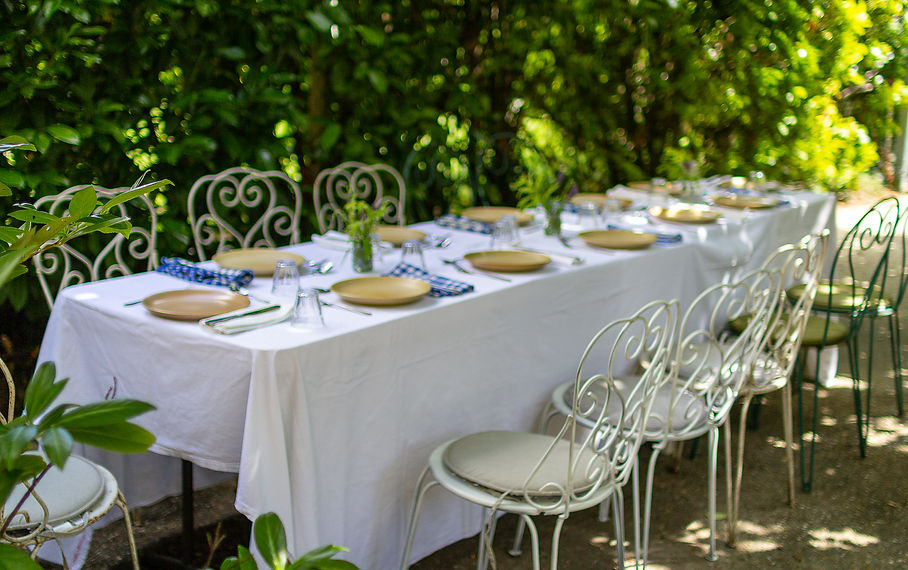
And further down this page you will find examples of ‘Laura’s Gascon Recipe of the Month’. You can use these Gascon Recipes to prepare your own Gascon dishes on holiday or in your own home ahead of your holiday in Gascony – or perhaps when you return home to remind you of a cooking workshop you did with Laura!
You will deal directly with Atelier Cuisine Fourcès – we will simply provide you with the introduction.
Laura Washburn Hutton
Atelier Cuisine Fourcès
+33 (0) 7 77 92 40 89
[email protected]
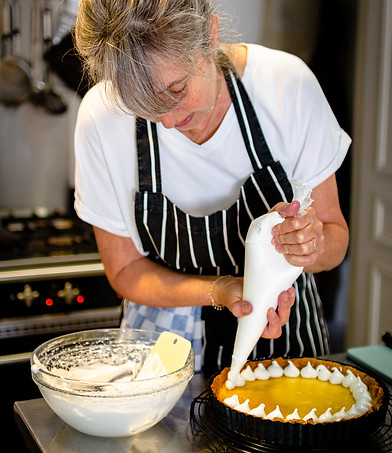

LAURA’S ‘RECIPES OF THE MONTH’
Laura’s French Onion Soup
Soupe à l’oignon gratinée
There are many different varieties of onions in France and each corresponds to different seasons and different cooking methods. One of the highlights of my French market tours is chatting with vegetable growers about onions; there is always something more to learn even about an ingredient as seemingly ordinary as an onion.
For this recipe, you can use whatever onions you have; it should be simple. At its origins, this soup was supposedly created by Louis XV who needed a late night snack but, alas, found only onions, butter and champagne in his pantry.
Onion soup has since become synonymous with bistro fare but it is also associated with other French traditions.
At French weddings, especially in the countryside, it is sometimes served in the early hours of the morning, as a restorative after a long night of celebrating. For the same reason, onion soup is often served early in the morning on New Year’s Eve. But just the onion soup, not the gratinée version with melted cheese topped bread which would be too rich to be theraputic!
Whatever the occasion, there’s no denying that the cold dark days of winter are enhanced by steaming bowls of comfort in the form of soupe à l’oignon gratinée.
Much fuss is made about the best recipe for this soup but, honestly, it’s not a complicated thing. Be sure to caramelise the onions first by cooking them gently over low heat and do not rush it. Once your onions are lovely and brown, the flavour will follow. I also like to add a pinch of sugar, to help with the caramelisation.
This recipe is simple; the sort of thing that’s ideal when it’s chilly outside, people are hungry inside and there’s not much more in the pantry than butter and onions. And champagne if you’re like Louis XV.
75 g unsalted butter
1 tablespoon rapeseed or sunflower oil
3 large onions, about 1.3 kg, thinly sliced
Generous pinch of sugar
2 garlic cloves, crushed
1 tablespoon plain flour
1 litre beef, chicken or vegetable stock
600 ml dry white wine
1 fresh bay leaf
2 sprigs of thyme
1 baguette, sliced
about 180 g Gruyère cheese, finely grated
coarse sea salt and freshly ground black pepper
Serves 4–6
Put the butter and oil in a large saucepan and add the onions. Cook gently over low heat until the onions are golden and caramelised.
Add the garlic and flour and cook, stirring for about 1 minute.
Add the stock, wine, bay leaf and thyme. Season with salt and pepper and bring to the boil. Boil for 1 minute, then lower the heat and simmer very gently for 20 minutes. Taste and adjust the seasoning. At this point, the soup will be cooked, but standing time will improve the flavour – at least 30 minutes. (But you can also prepare this a day in advance and refrigerate overnight).
Before serving, preheat the grill and reheat the soup if necessary. Put the baguette slices on a baking sheet and brown under the grill until lightly toasted. Set aside. Do not turn the grill off.
To serve, ladle the hot soup into ovenproof bowls and top with a few toasted
baguette rounds. Sprinkle grated cheese over the top and cook under the
still hot grill until browned and bubbling. Serve immediately.
Photo: Martin Brigdale © Ryland Peters & Small
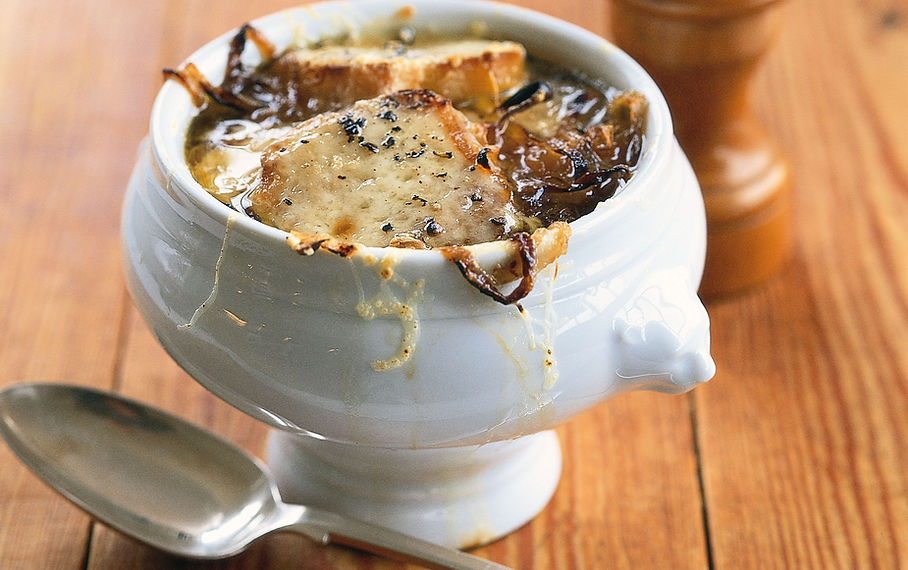
Laura's Winter Root Vegetable Gratin
Laura’s Gratin de légumes d’hiver
The dark days of winter call for food that is soothing as well as seasonal, so wherever you are in the world, I suggest you cosy up with this satisfying gratin. It is also a lovely thing to do when the days are short and gray; stay tranquil and stay in the kitchen, peeling and slicing and filling your home with delicious smells.
This is a simple homestyle French dish, very impressive and hugely delightful. When I’m in France, I like to make this to accompany a rotisserie chicken but it can also be a meal in itself or, if you like, add a hearty bottle of red, a cheese platter, crusty bread and a green salad for a feast.
3 small turnips (about 375g), peeled, halved and very thinly sliced
½ a celeriac, peeled, halved and very thinly sliced
½ a swede, peeled, halved and very thinly sliced
650g waxy potatoes, peeled, halved and very thinly sliced
225ml double cream
100g crème fraiche or sour cream
250ml milk
125g Gruyère or similar, grated
Sea salt and freshly ground black pepper
A 30 x 20cm baking dish, very well buttered
Serves 4-6
Preheat the oven to 180°C (375°F).
Put all the prepared vegetable slices in a large bowl and toss gently to combine. Set aside.
Combine the cream, crème fraiche or sour cream and milk in a small saucepan and heat just to melt the crème fraiche or sour cream. Stir well and season with salt and pepper.
Arrange half of the vegetables slices in the prepared baking dish. Sprinkle with a little salt and one-third of the cheese. Pour over one-third of the cream mixture. Top with the rest of the vegetables slices, the remaining cheese and a sprinkle of salt.
Pour over the remaining cream mixture and cover the dish with foil or dampened baking parchment. Bake in the preheated oven for 40 minutes. Remove the cover and return to the oven and cook until tender and well browned on top, 30-40 minutes more. Serve piping hot.
Photo: Martin Brigdale © Ryland Peters & Small
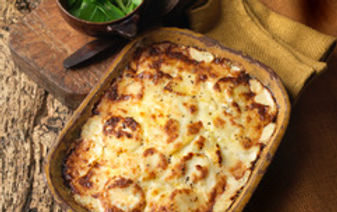
Laura’s Tarragon Chicken
No herb says France louder than tarragon, and this recipe has no particular region; it is served in homes and bistros throughout the country. It is a good dish to have in your French culinary repertoire, especially in the winter months when cooking seasonally can be more challenging. Frozen tarragon will work here but do not use dried.
In France, I get whole chickens from the market and either cut them into pieces myself or get the producer to do this for me. Or the butcher. In other places, you may find it easier to buy chicken pieces. The importance here is to use pieces with the bones. There is so much flavour in the bones and this is why it is not a problem to add water; the bones will seep flavour into the cooking liquid. But if you do use boneless chicken, replace the water with good quality chicken stock.
And, if you find the taste of chickens where you are less than fabulous, come to Gascony soon and experience for yourself what chickens are supposed to taste like 😊
Serves 4-6
1 whole chicken, cut in pieces
2-3 tbsp unsalted butter
1 large shallot or 1 small onion, chopped
125 ml dry white wine
2 tbsp vinegar, white wine or cider
2-3 sprigs parsley
1 bunch fresh tarragon
3-4 tbsp crème fraiche
Wholegrain Dijon mustard, optional
Salt and pepper
In a sauté pan with a lid, large enough to hold all the chicken pieces in a single layer, heat the butter until just foaming. Add the chicken pieces, skin-side down. Do not crowd the pan; you may need to work in batches. Cook over medium heat until well browned on the first side, taking care not to burn. Turn and brown the other side. Transfer the pieces as they brown to a plate, season well with salt and continue cooking as required. If there is a lot of fat in the pan at the end, remove some with a spoon.
Lower the heat and add the shallot or onion to the pan and cook for a few minutes or so, just until beginning to turn golden. Add the wine and vinegar and stir to blend. Return the chicken to the pan and and top up with water to cover the pieces halfway.
Tie the parsley and about 1/3 of the tarragon bunch together with kitchen string and add this herb bundle to the pan. Cover and simmer gently until the chicken is cooked through, 35-45 minutes.
Up to this point you can make the recipe ahead of time, and it will be better if you do (refrigerate overnight even) just be sure to reheat the chicken thoroughly before proceeding with the rest.
Meanwhile, strip the leaves from the remaining tarragon sprigs, chop finely and set aside. Add the stems to the cooking chicken (or put them in a bottle of vinegar to make tarragon vinegar).
When the chicken is cooked through, transfer the pieces to a heatproof serving dish. Remove the herb sprigs from the pan and discard.
Raise the heat and cook until the sauce is reduced by about two-thirds. Taste and adjust seasoning. You may even want to add a pinch of sugar if the vinegar is too acidic. Or add a splash if there is not enough. Continue reducing if necessary.
When ready to serve, stir in the crème fraiche and chopped tarragon. Taste again and if you find it a bit too subtle, stir in a good whack of whole-grain mustard. Pour the sauce over the chicken, grind over some black pepper and serve immediately.
Photo: Martin Brigdale © Ryland Peters & Small

Laura’s Chocolate chestnut tart
Tarte au chocolat et crème de marrons
Sweetened chestnut purée (crème de marrons) is an iconic French ingredient. Sweet chestnuts grow in abundance all over France, and here in Gascony.
In the late 1800s a clever food manufacturer created this product and, although it is distinctly French, it is widely exported which is good news for lovers of French food. The best brand is Clément Faugier, so if you are visiting France look out for tins in the supermarkets and be sure to tuck a few into your suitcase before returning home.
Perfect for fuss-free holiday baking, this simple and elegant tart recipe highlights a match made in heaven: chocolate and sweetened chestnut purée. The chestnut flavouris subtle yet pleasant, and the texture of the filling becomes creamier and smoother thanks to the addition of the crème de marrons.
For entertaining, this can easily be made in advance and kept in the refrigerator until needed (for up to 24 hours), but do not serve it chilled; room temperature is ideal.
If you prefer, make your favourite sweet pastry (pâte sucrée) from scratch but it is perfectly acceptable to use a ready-made all-butter sweet pastry. Whichever method you choose be sure to pre-bake your pastry shell, using a loose-bottomed pan, before adding the chocolate-chestnut filling.
Ingredients
1 pre-baked 25 cm Sweet Pastry tart shell, still in its tin and cooled
cocoa powder, for dusting
whipped cream or sweetened crème fraîche, to serve
Chocolate chestnut filling
100 g dark chocolate, finely chopped
3 tablespoons unsalted butter
1 egg, beaten
200 ml cream
200 g tinned sweetened chestnut purée
Serves 6-8
Cooking
Preheat the oven to 150°C (300°F) Gas 2.
To make the filling, put the chocolate in a large microwave-proof bowl and microwave on HIGH for 30 seconds. Remove, stir and repeat until almost completely melted. Remove, add the butter and stir until melted.
Stir in the egg, cream and chestnut purée and mix just to blend.
Put the tart shell on a baking tray and set this on the oven rack, partly pulled out. (If you try to fill the shell and then transfer it to the oven, it may spill over the edges and burn.) Pour the chocolate mixture into the tart shell and carefully slide the oven shelf back into place.
Bake in the preheated oven for 20–25 minutes, until just set. Let cool to room temperature before serving. Dust with cocoa powder, if desired.
*NOTE If you don’t have a microwave, put the chocolate in a bowl over a saucepan of simmering water – don’t let the water touch the bottom of the bowl. Leave until melted, stirring occasionally.
Photo: Martin Brigdale © Ryland Peters & Small
